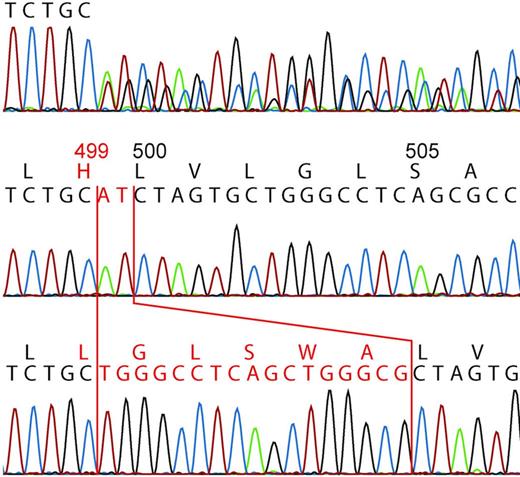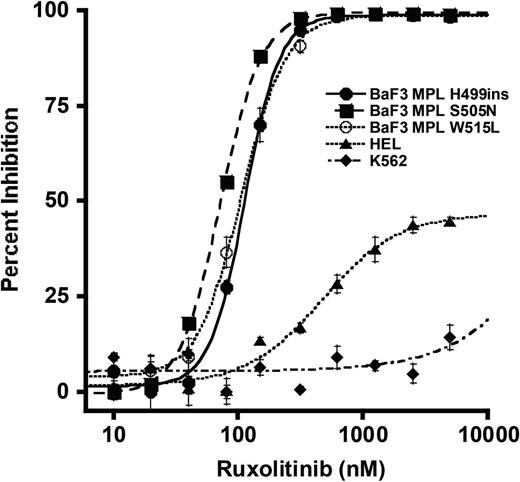Abstract
Essential thrombocythemia (ET) is a clonal disease of hematopoietic stem cell. Somatic gene mutations including JAK2 or CALR are hallmark of diagnosis and molecular targets for developing novel therapies. However, non-mutated ET cases within JAK2 and CALR still exist. The third mutated gene of ET is MPL, which is known as encoding thrombopoietin receptor. MPL W515 and S505 are hot spot for missense mutations leading to constitutive active MPL signaling. These missense mutations are located within transmembrane or juxtamembrane domain of MPL. Here, we present a novel activating-mutation of MPL in an ET patient.
The patient was a 54-year-old woman with occasional headache. A full blood count showed a hemoglobin level of 12.2 g/dL, a white blood cell count of 11.2 x 103/mL and a platelet count of 164 x 104/mL. A bone marrow sample was hypercellular, containing increased megakaryocytes. Chromosomal analysis showed normal karyotype. Further genetic analysis did not detect JAK2 V617F or CALR mutation. Finally, we directly sequenced MPL exon 10. The result showed MPL c.1496-1497AT>TGGGCCTCAGCTGGGCG (Figure 1). This mutation has been considered as an in-frame mutation, indicating MPL p.H499LGLSWA (reference: NP_005364). The amino acids insertion in transmembrane domain of MPL belongs to hydrophobic family, suggesting that MPL H499 mutation (H499ins) might construct stable structure.
To investigate whether MPL H499ins is functionally active, we established stable BaF3/MPL H499ins cell lines. In contrast to BaF3/MPL wild-type, BaF3/MPL H499ins cells proliferate without WEHI3-conditioned medium as well as BaF3/MPL W515L or S505N. Western blot analysis showed BaF3/MPL H499ins cells constitutionally activate downstream signaling including JAK-STAT, MAPK and AKT. Furthermore, we established stable BaF3 cell lines with MPL H499 LGLSWALGLSWA (H499 insx2), MPL H499del and others. In contrast to BaF3/H499del, H499L, H499LG and H499insx3, BaF3/MPL H499insx2 cells proliferate without WEHI3-conditioned medium. This result suggests that elongation of MPL transmembrane domain is a novel oncogenic mechanism leading to constitutive active MPL signaling. Phosphorylation of MPL Y626 has significant role to transduce MPL signaling. To explore if constitutive activation of MPL H499ins depends on phosphorylation of MPL Y626, we established stable BaF3 cell lines with MPL H499insY626F. The BaF3 cells could not proliferate without WEHI3-conditioned medium. This result clearly shows phosphorylation of MPL Y626 has a pivotal role for constitutive activation of MPL H499ins. Finally, we examined potential effect to inhibit constitutive MPL signaling with JAK1/2 inhibitor, Ruxolitinib. In contrast to K562, growth of BaF3/MPL H499ins cells were inhibited with Ruxolitinib at half maximal effective concentration 113 nM as well as MPL W515L or S505N (Figure 2).
In summary, elongation of MPL transmembrane domain is a novel oncogenic mechanism in ET patients. Ruxolitinib is also a potent inhibitor against MPL activating mutations as well as JAK2 V617F-associated myeloproliferative neoplasm.
No relevant conflicts of interest to declare.
Author notes
Asterisk with author names denotes non-ASH members.



